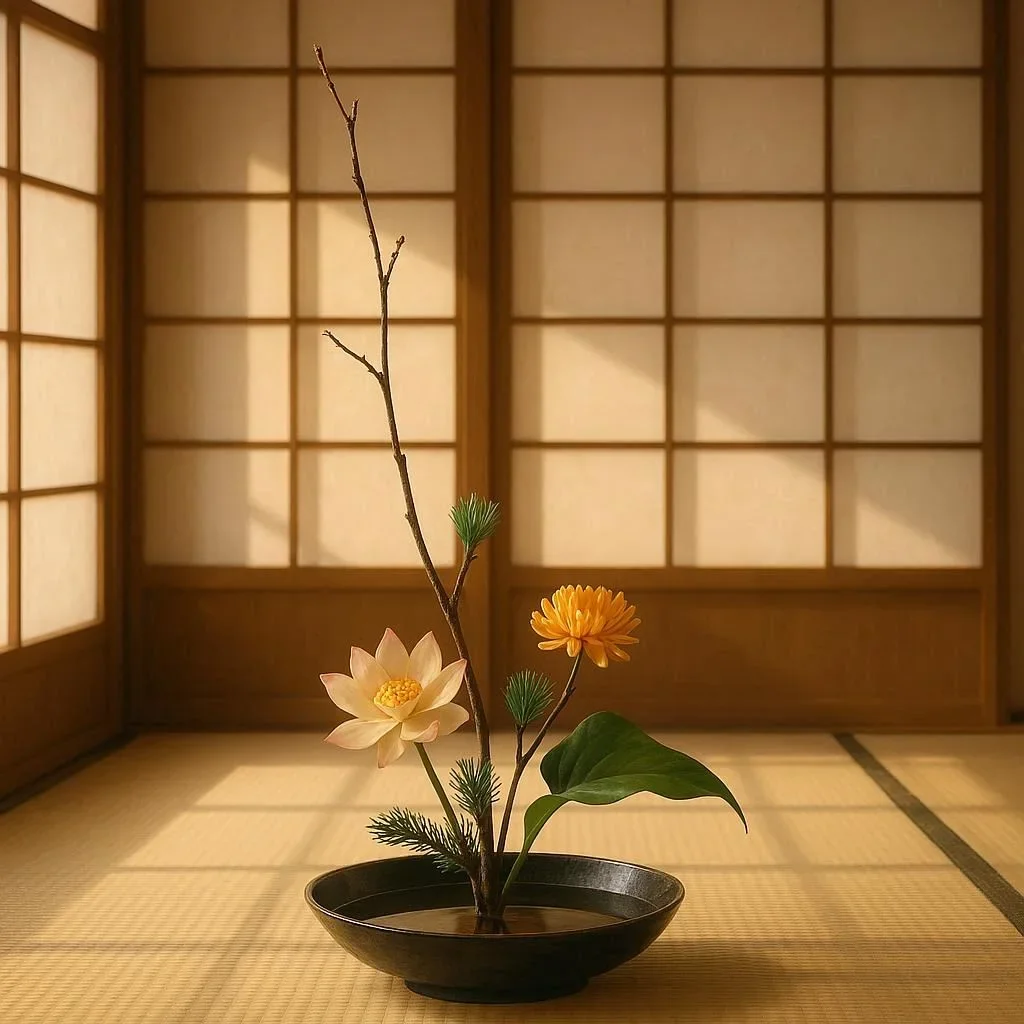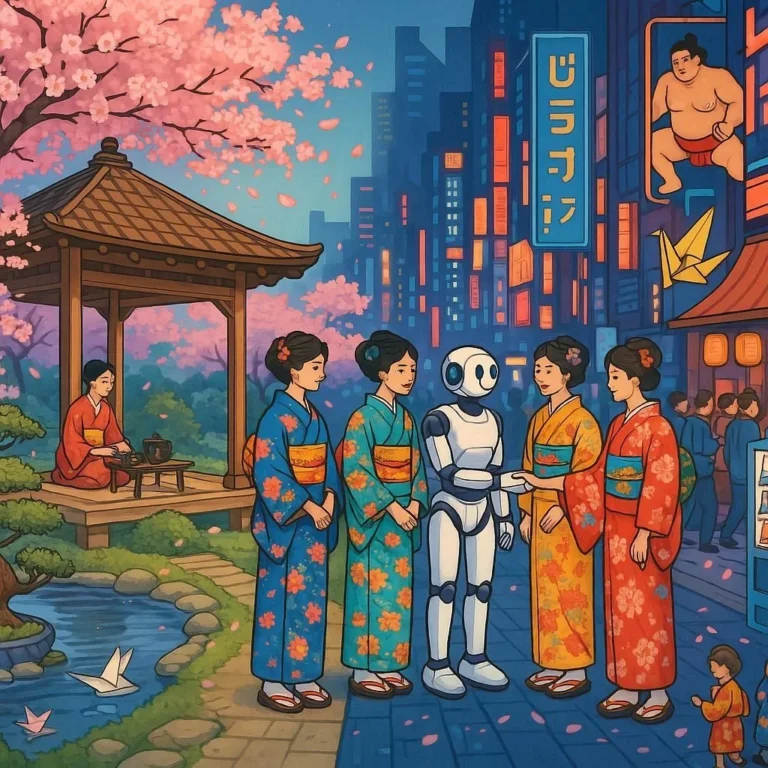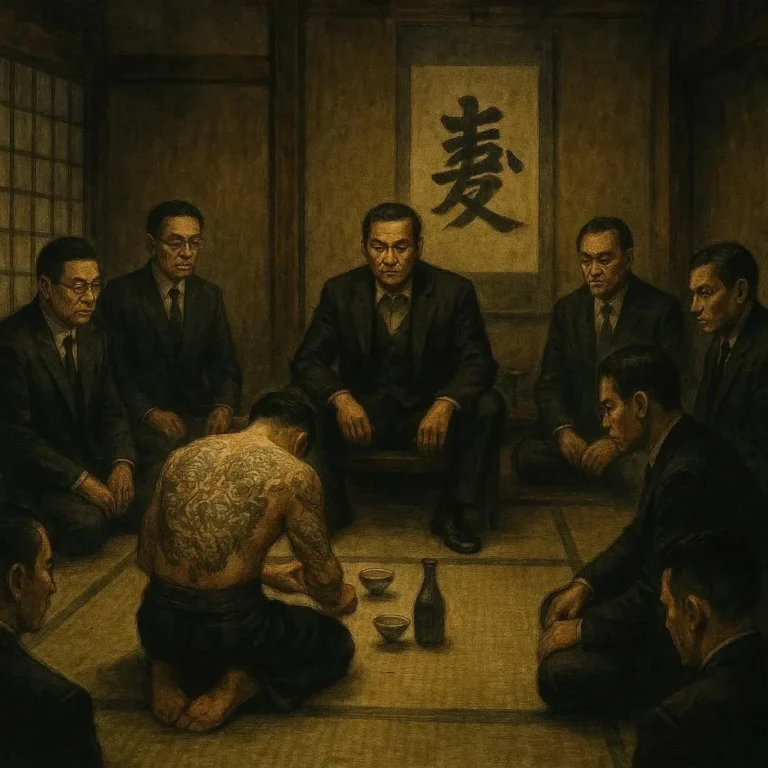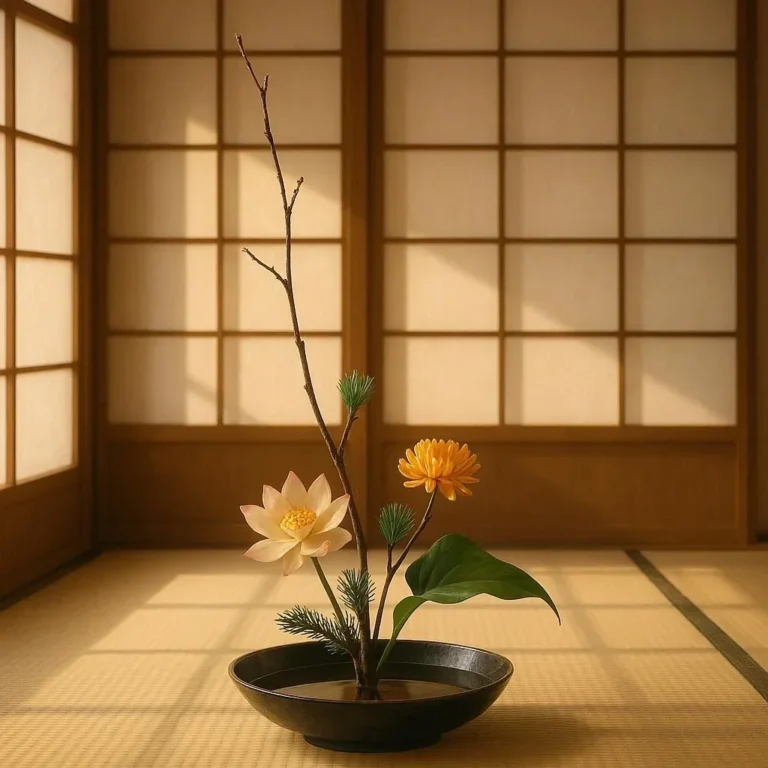505 views The Art of Ikebana: Japanese Flower Arrangement Techniques
Ikebana, the ancient Japanese art of flower arrangement, is more than just placing flowers in a vase. It is a deeply symbolic and meditative practice that reflects the harmony between nature and humanity. This traditional art form has been perfected over centuries, blending aesthetics, philosophy, and spirituality into a unique expression of Japanese culture. In this blog post, we’ll delve into the world of Ikebana, exploring its history, key principles, techniques, and how you can start creating your own Ikebana arrangements.
A Brief History of Ikebana
Ikebana, which translates to “living flowers” or “arranged flowers,” has its roots in Buddhist rituals that date back to the 6th century. Originally, flowers were arranged as offerings to the spirits and deities in temples. Over time, Ikebana evolved into a secular art form, influenced by the changing social and cultural dynamics of Japan.
During the Edo period (1603–1868), Ikebana became a popular pastime among the aristocracy and samurai classes. It was not just a hobby but a way to cultivate discipline, patience, and mindfulness—qualities highly valued in Japanese culture. Today, Ikebana is practiced worldwide, with numerous schools and styles emerging, each with its own unique techniques and philosophies.
Key Principles of Ikebana
Ikebana is not just about arranging flowers; it is governed by a set of principles that ensure each arrangement is balanced, harmonious, and visually pleasing. Below are the key principles that form the foundation of Ikebana:
1. Harmony (Wa)
Harmony is the cornerstone of Ikebana. The arrangement should reflect the natural world, with each element working in tandem to create a balanced whole. This harmony extends to the choice of flowers, branches, and the container, as well as the space around them.
2. Balance (Hei)
Balance in Ikebana is achieved by considering the weight and visual impact of each element. This doesn’t mean symmetry; rather, it’s about creating a sense of equilibrium that feels natural. For instance, a heavy branch on one side might be balanced by a cluster of flowers on the other.
3. **Rhythm (In)
Rhythm refers to the movement and flow within the arrangement. Ikebana arrangements often follow a dynamic composition, with lines and shapes creating a sense of movement. This rhythm can be achieved by varying the lengths and angles of the stems.
4. **Contrast (Yo)
Contrast adds interest to an arrangement by juxtaposing different colors, textures, and shapes. For example, pairing delicate petals with rugged branches or vibrant flowers with muted tones can create a striking visual effect.
5. **Space (Kū)
Space is as important as the elements themselves. Empty space allows the arrangement to breathe and gives the eye a place to rest. In Ikebana, the concept of “ma” (the space between things) is crucial, as it creates a sense of simplicity and elegance.
Tools and Materials
To create an Ikebana arrangement, you’ll need a few essential tools and materials. These include:
1. Flower Vase (Tate)
The vase is more than just a container; it is an integral part of the arrangement. Ikebana vases come in various shapes, sizes, and materials, from simple ceramic pots to elaborate lacquered designs.
2. Floral Foam or Kenzan (Spike Board)
The kenzan is a metal or plastic spike board placed at the bottom of the vase to hold the stems in place. It allows for precise control over the positioning of each element.
3. Branches and Leaves
Branches and leaves are often used as the foundation of the arrangement. They provide structure and add depth to the design.
4. Flowers
The choice of flowers depends on the season and the desired aesthetic. Ikebana practitioners often use seasonal flowers (kabiku) to reflect the changing seasons.
5. Cutting Tools
A sharp knife or pruning scissors is essential for trimming stems and shaping branches.
Steps to Create a Basic Ikebana Arrangement
Creating an Ikebana arrangement is a meditative process that requires focus and intention. Below are the basic steps to get you started:
Step 1: Select Your Materials
Choose your flowers, branches, and vase based on the theme or season. Consider the colors, shapes, and textures that will work well together.
Step 2: Prepare the Vase
Clean the vase thoroughly and place the kenzan at the bottom. Add fresh water to the vase to keep the flowers hydrated.
Step 3: Start with the Base
Begin by placing the main branch or greenery in the vase. This will form the foundation of your arrangement and help establish balance.
Step 4: Add the Secondary Elements
Introduce secondary elements such as smaller branches or leaves to fill out the arrangement. These should complement the main branch without overwhelming it.
Step 5: Incorporate Flowers
Add the flowers last, placing them in a way that creates movement and interest. Pay attention to the placement of each flower to ensure harmony and balance.
Step 6: Adjust and Refine
Step back and evaluate your arrangement. Make adjustments to the placement of stems, trim any excess foliage, and ensure the overall composition feels natural and cohesive.
Step 7: Final Touches
Once you’re satisfied with your arrangement, give it a final once-over to ensure everything is secure and in place. Add any finishing touches, such as a decorative stone or ribbon, if desired.
Popular Schools of Ikebana
Over the centuries, various schools of Ikebana have emerged, each with its own unique style and approach. Below are some of the most well-known schools:
1. Ikenobō School
The Ikenobō school is the oldest and most prestigious school of Ikebana. It emphasizes naturalism and simplicity, with arrangements that reflect the beauty of the natural world.
2. Ohara School
The Ohara school is known for its use of curved lines and natural forms. It often incorporates seasonal materials and emphasizes the importance of space and rhythm.
3. Sōgetsu School
The Sōgetsu school is more contemporary and experimental, often pushing the boundaries of traditional Ikebana. It encourages creativity and self-expression.
4. N агата School
The Nagata school focuses on natural arrangements that emphasize the beauty of the materials themselves. It often uses minimalistic designs to highlight the intrinsic beauty of the flowers and branches.
Ikebana in the Modern World
Ikebana is not just a relic of the past; it continues to evolve and adapt to the modern world. Today, Ikebana is practiced by people from all walks of life, and its influence can be seen in floral design, architecture, and even fashion.
Contemporary Ikebana artists are experimenting with new materials, techniques, and concepts, pushing the boundaries of this ancient art form. Whether it’s using unconventional materials or incorporating modern design principles, Ikebana continues to inspire and captivate audiences around the globe.
The Benefits of Practicing Ikebana
Beyond its aesthetic appeal, Ikebana offers a range of benefits for those who practice it. Here are just a few reasons why you might consider giving it a try:
1. Mindfulness and Relaxation
The process of creating an Ikebana arrangement is meditative, requiring focus and calmness. It can be a wonderful way to unwind and connect with nature.
2. Creativity and Self-Expression
Ikebana allows you to express your creativity and bring your ideas to life. It’s a form of self-expression that can be both fulfilling and rewarding.
3. Cultural Connection
Practicing Ikebana is a way to connect with Japanese culture and tradition. It offers a unique glimpse into the values and aesthetics of Japan’s rich cultural heritage.
4. Skill Development
Mastering the techniques of Ikebana requires patience, discipline, and practice. It can be a challenging yet rewarding skill to develop.
Conclusion
Ikebana is more than just a flower arrangement; it is a way of life. It teaches us to appreciate the beauty in simplicity, to find harmony in nature, and to cultivate mindfulness in everyday life. Whether you’re a seasoned practitioner or just starting out, Ikebana offers a unique opportunity to connect with the natural world and express yourself creatively.
So, if you’re feeling inspired, why not give Ikebana a try? With a little practice and patience, you can create beautiful, meaningful arrangements that reflect your own unique style and appreciation for the art form. Happy arranging!







